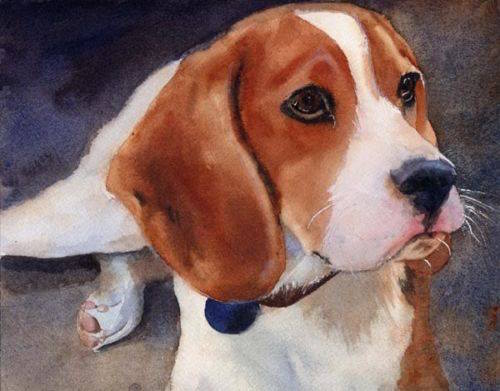
True story. A couple of years ago, we met a chap who was snuggling his new puppy with obvious affection. When we asked about the dog’s breed, we were told the pup was an “Alaskan Rottweiler.” Without severing the tongue we were biting at the time, we managed to ask what made the dog an “Alaskan Rottweiler.” “See the white spots on all his feet and his chest?,” the proud owner asked us. “That’s what makes him an Alaskan Rottweiler.”
In case anyone is wondering, the Rottweiler’s AKC breed standard writes: “Serious Faults: Straw-colored, excessive, insufficient or sooty markings; rust marking other than described above; white marking any place on dog.”
This sweet puppy’s new owner clearly loved him, and hopefully, they’ve been happy together, but one wonders how much he paid for a “rare” Alaskan Rottweiler?
Breed standards aren’t just for show dogs, they are guides that tell all of us, pet owners and fancier alike, what to look for in a breed. The descriptions are there for a reason, and had Mr. Alaskan Rottweiler thought to do his homework about Rottweilers, he would have learned that white spotting wasn’t “okay” in the breed by AKC standards, and that serious people who know and love Rottweilers don’t recognize an “Alaskan Rottweiler.”
Red flags should go up when breed descriptions include the word “rare,” “teacup” or “king” in reference to size, and “unusual” colors. These marketing ploys hurt all of us. Buying a “rare” version of a breed creates a market that encourages more unsound dogs to be bred. A breed is hurt when friends, relatives or neighbors of the owner of such a dog see the heartache that comes from owning an unhealthy dog, and assume that the entire breed is unsound; Heritage breeders are hurt because animal rights activists and adopt-don’t-shop zealots use unsound dogs to paint all breeders as reprehensible.
We know how difficult it can be to dissuade someone from making a disastrous decision about buying a “rare” (fill in the breed blank), especially if they have fallen in love with a puppy, or are the kind of person who thinks they know best. Consider doing them a “solid” by sharing the breed standard with them, and telling them that it’s the blueprint for the breed they’re considering. Stress that it’s not just for show dogs, but for all dogs of that breed. They won’t understand a lot of it (what person outside the Pointer fancy, for example, would understand, “The skull of medium width, approximately as wide as the length of the muzzle, resulting in an impression of length rather than width”), but it might make them think, or better yet, do more research.
Image: Beagle by Rachel Parker –rachelsstudio
www.rachelsstudio.com
www.facebook.com/
www.etsy.com/shop/

I am a labrador lover… a few years back I was at a hunting outdoor show and they had a puppy tent. I am the first to say do not buy from a puppy tent, but they are puppies, its ok to look at them. One breeder there had a BIG area, and an equally big sign offering their rare “silver” lab bred to a “brindle” lab…. asking…. $3500 per puppy. I almost went ballistic. No where is brindle or silver acceptable in a labrador. It floors me how gullible people are to spend so much money on a poorly bred dog. Before I was into understanding breeders and standards, I paid $50 for my dogs. I didn’t care if they were mixed with something, they cost $50.
When I worked for a small group of Veterinarians back in the 1980s, we had a couple come in with their ‘rare’ brindle Labrador, bragging every time to the whole waiting room. We know they bought it from one of the area’s most notorious Puppy Mills. Strongly suspect the brindle came from a Plott Hound, as he looked houndish. I see the ads for ‘rare’ silver Labradors (AKA Weimeraner ancestry) all too often, but never saw but that 1 ‘rare’ brindle. Whattayaknow. PT Barnum said “There’s a sucker born every minute.” Never will understand why people choose a breed, then search out an oddball, backyard or puppy mill ‘Rare’ version.